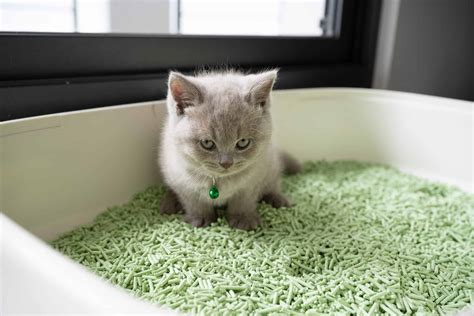Introduction

Flushable cat litter, touted as the epitome of convenience for cat owners, hit the market with a bang, promising to revolutionize the way we care for our feline companions. However, the debate surrounding its environmental implications has cast a shadow over its allure. This comprehensive guide delves into the intricate world of flushable cat litter, exploring its benefits and drawbacks, and ultimately guiding you toward an informed decision.
Understanding Flushable Cat Litter
Definition
Flushable cat litter, unlike traditional litter, is specifically designed to be disposed of by flushing it down the toilet. Typically made from biodegradable materials such as wood pulp, corn, or wheat, it aims to minimize the environmental impact associated with disposing of soiled litter.
Mechanism of Action
Flushable cat litter is engineered to disintegrate rapidly when exposed to water. This allows it to break down into smaller particles that can pass through household plumbing and septic systems without causing clogs. The litter absorbs liquid waste while retaining solid excrement, enabling the latter to be flushed away.
Types of Flushable Cat Litter
- Biodegradable Litter: Composed of natural, plant-based materials that decompose over time, resulting in reduced environmental footprint.
- Septic-Safe Litter: Specifically formulated for households that rely on septic systems, ensuring safe disposal without jeopardizing the system’s integrity.
Unveiling the Benefits of Flushable Cat Litter
Enhanced Convenience:
Flushable cat litter offers unparalleled convenience to cat owners. The simple act of flushing eliminates the hassle and unpleasantness associated with scooping and disposing of soiled litter, making cleanup a breeze.
Odor Control:
Flushable cat litter effectively neutralizes odors, keeping your home smelling fresh and inviting. Unlike traditional litter that traps odors, flushable litter eliminates the source by removing both solid and liquid waste.
Reduced Litter Consumption:
Flushable cat litter requires less frequent replacement compared to traditional litter. Its ability to disintegrate and flush away eliminates the need for scooping and discarding soiled litter regularly, leading to reduced litter consumption and cost savings.
Navigating the Environmental Concerns
Potential Clogging:
Flushable cat litter, although designed to disintegrate, may still pose a clogging risk if not used properly. Flushing excessive amounts or using the litter in older plumbing systems can result in blockages.
Water Contamination:
Critics argue that flushable cat litter may contribute to water contamination. The release of biodegradable materials into wastewater systems has the potential to disrupt aquatic ecosystems and deplete oxygen levels.
Microplastic Pollution:
Some flushable cat litter brands contain synthetic polymers that can break down into microplastics. These tiny particles can accumulate in the environment, harming marine life and potentially entering the human food chain.
Weighing the Pros and Cons
Pros:
- Ultimate convenience: eliminates scooping and disposal hassle
- Excellent odor control: neutralizes odors effectively
- Reduced litter consumption: saves money and reduces waste
- Potentially more hygienic: removes waste entirely
Cons:
- Environmental concerns: potential clogging, water contamination, and microplastic pollution
- May not be suitable for all plumbing systems: risk of blockages
- Limited availability: not all brands are widely available
- Cost: can be more expensive than traditional litter
Transitioning to Flushable Cat Litter: A Practical Guide
- Choose the Right Litter: Opt for biodegradable or septic-safe litter to minimize environmental impact and system compatibility.
- Start Gradually: Introduce flushable litter gradually to your cat’s litter box, mixing it with traditional litter at first.
- Monitor Regularly: Check for any changes in your cat’s litter box habits or plumbing issues.
- Flush Wisely: Avoid flushing excessive amounts of litter at once, especially in older plumbing systems.
- Consider the Environment: Dispose of flushable cat litter responsibly, adhering to local wastewater regulations and guidelines.
FAQs on Flushable Cat Litter
-
Is all flushable cat litter safe for septic systems?
No, not all flushable cat litter is septic-safe. Look for brands specifically labeled as septic-safe to avoid damaging your system. -
Can I flush cat poop down the toilet?
No, cat poop should not be flushed down the toilet. Flushing solid waste can clog plumbing systems and contribute to wastewater contamination. -
Is flushable cat litter better than traditional litter?
The best type of litter depends on individual preferences and circumstances. Flushable cat litter offers convenience but raises environmental concerns, while traditional litter requires scooping and disposal but may be more environmentally friendly. -
Are there any eco-friendly alternatives to flushable cat litter?
Yes, there are eco-friendly alternatives such as pine pellets, recycled newspaper, and tofu-based litter that offer biodegradable and sustainable options.
The Future of Flushable Cat Litter
The future of flushable cat litter lies in the development of more sustainable materials and innovative designs. Research is underway to create litter that disintegrates completely, eliminating clogging and environmental





















